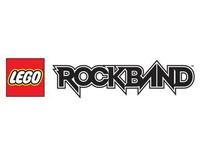
The story begins, as you would expect, when you create a band. Instead of just being assigned random members, your character holds auditions and your band is formed. Your band mates stick with you throughout the whole story and you can customize them however you wish. It was great to have that sense of permanence with the characters as you attain roadies and entourage members. Your bandmates and roadies have personalities of their own and play their own parts in your band’s legendary story. The attachment formed and the fantastic writing really immerse you in the LEGO universe, something Rock Band 2 didn’t always accomplish on its own. The story built into the game really gives it life. The clever writing LEGO games are known for is evident throughout the entire storyline. It is built in, around and all over this title. From the cut screens before Rock Power Challenges to the “LEGO Legend” blurbs on the load screens, there are plenty of smiles and knowing chuckles to be had. These moments, along with the cutscenes, were the reason I wanted to pick up my guitar and continue playing; easily my favorite part of the game.
Like its sibling, LEGO Rock Band has gigs (read: sets) set up in venues (read: cities). You reach these locales through the use of vehicles you can purchase as you earn stars (read: stars) playing songs, acquiring studs (read: money) and completing Rock Power Challenges. Vehicles are not the only thing you can collect. LEGO Rock Band has more loot than Torchlight. I played over 100 gigs in my playthrough of this game and I unlocked something new after every single gig save maybe two. Minifigures to expand the cast of characters, vehicles to purchase, pets to hang out in the rock den, furniture to decorate the rock den and entourage members to hire are among the types of items you can receive. I’m sure this feature is for the younger individuals who need to feel that sense of accomplishment after every gig, but for me it became white noise.
Rocking out as Blur
Customization is a huge part of game as you have control over almost everything, from the look of the band, to the roadies, to the entourage, to your instruments to the Rock Den. The Rock Den is where you go back on tour, visit the rock shop, manage your people, rewatch videos, hit up practice mode and free play songs and rock power challenges. Each room is customizable with all the wonderful loot you have acquired. From the lights to the wall hangings to the extra comfy sofa in front of the television, you can mix and match to create the rock den that screams you.
“Enough already!” you’re saying. “Give us Rock Power Challenges.” All right then. Rock Power Challenges (RPCs) are special events where your band is called upon to use the power of rock to complete a task. Think of them like boss fights you must win to continue on in the story, only not nearly as stressful. One of the first challenges you encounter is at the haunted house. You must play Ray Parker Jr.’s “Ghostbusters” to send the unwanted spirits packing. The challenge portion comes in as the pieces of the song are broken down so only one band member is playing at a time and they carry the entire band for that short time. There is also no overdrive to earn so you really are relying on your bandmates when you aren’t playing. It is a clever and enjoyable addition to the gameplay and is a welcome change of pace from the repetition of build a set list and surprise set list. That said, playing RPCs solo is nowhere near as fun as playing in a group of people because you’re the only one playing and you lose that sense of working together as a team. The RPCs are tied in heavily to the story and only enhance the experience further.
The entire set list of songs is good. Good, not great. Certain songs like “Ghostbusters,” “Walking on Sunshine,” “Song 2,” “Fire” and especially “The Final Countdown” are definite must-plays while a few of the other choices leave you guessing. The fact that the list is only 45 songs total does raise an eyebrow for a game listed at full-price, but for an extra ten dollars you can import the songs from LEGO Rock Band into Rock Band 2, but only if you’re playing it on the Xbox 360 and Playstation 3.
Check out Freddie's chest hair
This is probably my biggest disappointment with the game. LEGO Rock Band on the Nintendo Wii has no online support, does not incorporate download tracks and has no import/export function. All of these are available and supported on Playstation 3 and XBox 360. Owning a Nintendo Wii, I am used to receiving a slightly gimped version of multi-console games, but all of these features are already available in other games. First, online stores to purchase DLC are available on both the Guitar Hero and Rock Band platforms on Wii and have been for almost two years. Second, both platforms recognize the downloadable content not only from the system memory, but from SD cards as well. For the last gripe, only Guitar Hero on Wii currently offers an import/export function, and only from Guitar Hero 5 to Band Hero and vice versa. All three of these features have been done before, and really, should have been included in this version of the game.
That doesn’t mean that LEGO Rock Band does nothing well. Besides Rock Power Challenges and the story, you can find all sorts of eye-catching flourishes. Backgrounds when displaying results, the yellow track of overdrive and the blue track for solos and bass grooves all incorporate LEGO blocks in them. Having artists like David Bowie, Iggy Pop and Spinal Tap modeled as LEGO people enhance the overall experience. They also have a “Super Easy” mode for the uncoordinated, removing the fret buttons altogether. It also has a specialized way for struggling players to return to the song instead of failing out. I wouldn’t know how this works because at no time was I ever in danger of failing out.
Bowie!
This leads me into the things LEGO Rock Band struggled with in the final product. Normally, when I’m playing the bass on Rock Band 2, I have difficulties with playing every song on Hard mode. Sometimes, I don’t make the grade and fail out which is fine. Like I said above, at no time was I ever in danger and I played every song on Hard. This was due to the game being extremely forgiving on hitting notes. I saw instances of the note clearing the target area and still going off as a successful strum. While I can appreciate they wanted to give me a little more leeway, it does not help me improve my ability. Next, the time it takes for a set to load is too long. It broke up the flow of the game to the point I felt comfortable leaving the room to grab something to drink in the time the load screen was up. The last bit is probably only annoying to me and that’s the eerie silence that hangs at the beginning of a set as the camera moves through the crowd to the band and the song begins. Previous iterations of Rock Band had cheering crowds or tuning instruments or, in Beatles Rock Band, recording pre-show chatter. Why is it silent?
LEGO Rock Band is an acceptable addition to the Rock Band family. While geared to a younger demographic, there is much in the game that will appeal to every player. This is a decent buy for the casual rhythm game player, if you have children who struggle with the instruments or in use as a party game. Hardcore players on PS3/360 or Wii owners will want to wait until this is at a much better price point to justify the lack of songs or features.
Various disclaimers and addendums:
- * -- LEGO blocks in their current form started in 1958
- I played the entire story mode on the bass guitar on hard mode
- My playthrough ran about 23 hours though you could easily finish in less time
- I did receive the game as a review copy from Warner Bros. Interactive
- The Nintendo Wii version was used primarily for this review.












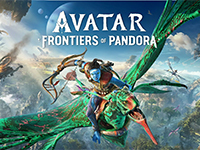
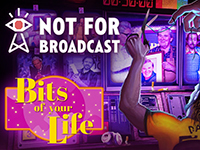

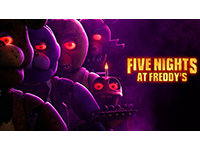
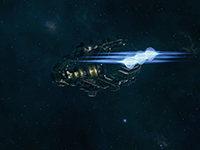
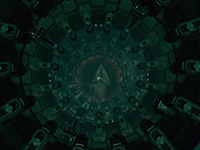
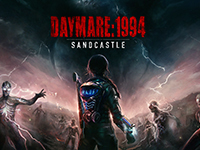

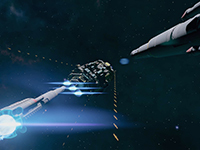

















![Stray Gods: The Roleplaying Musical — Hades Plays The Demo [PC Gameplay] Stray Gods: The Roleplaying Musical — Hades Plays The Demo [PC Gameplay]](https://img.youtube.com/vi/9KovJqWbxXc/default.jpg)

![AggroCast — Let’s Talk Summer Game Fest [Episode Nine] Teaser AggroCast — Let’s Talk Summer Game Fest [Episode Nine] Teaser](https://img.youtube.com/vi/7ONtHKQIFXg/default.jpg)
![Shadow Gambit: The Cursed Crew — Hades Plays The Demo [PC Gameplay] Shadow Gambit: The Cursed Crew — Hades Plays The Demo [PC Gameplay]](https://img.youtube.com/vi/tVpM6AIbPyk/default.jpg)

![The Expanse: A Telltale Series — Crafting A Narrative [BTS] The Expanse: A Telltale Series — Crafting A Narrative [BTS]](https://img.youtube.com/vi/KWM_aDSIHfY/default.jpg)

